Useful Guide On How to Plan A Motorbike Trip in Vietnam
Riding a motorbike through Vietnam is the best way to get to know the nation. Exploring cities, towns and villages will give you a basic understanding of the culture, but riding between them will make you feel part of it all. Whether exploring the whole country by bike or just doing a motorbike day tour, a motorbike adventure is something you have to experience when traveling in Vietnam, according to Stingy Nomads.
1. Check the weather before you go
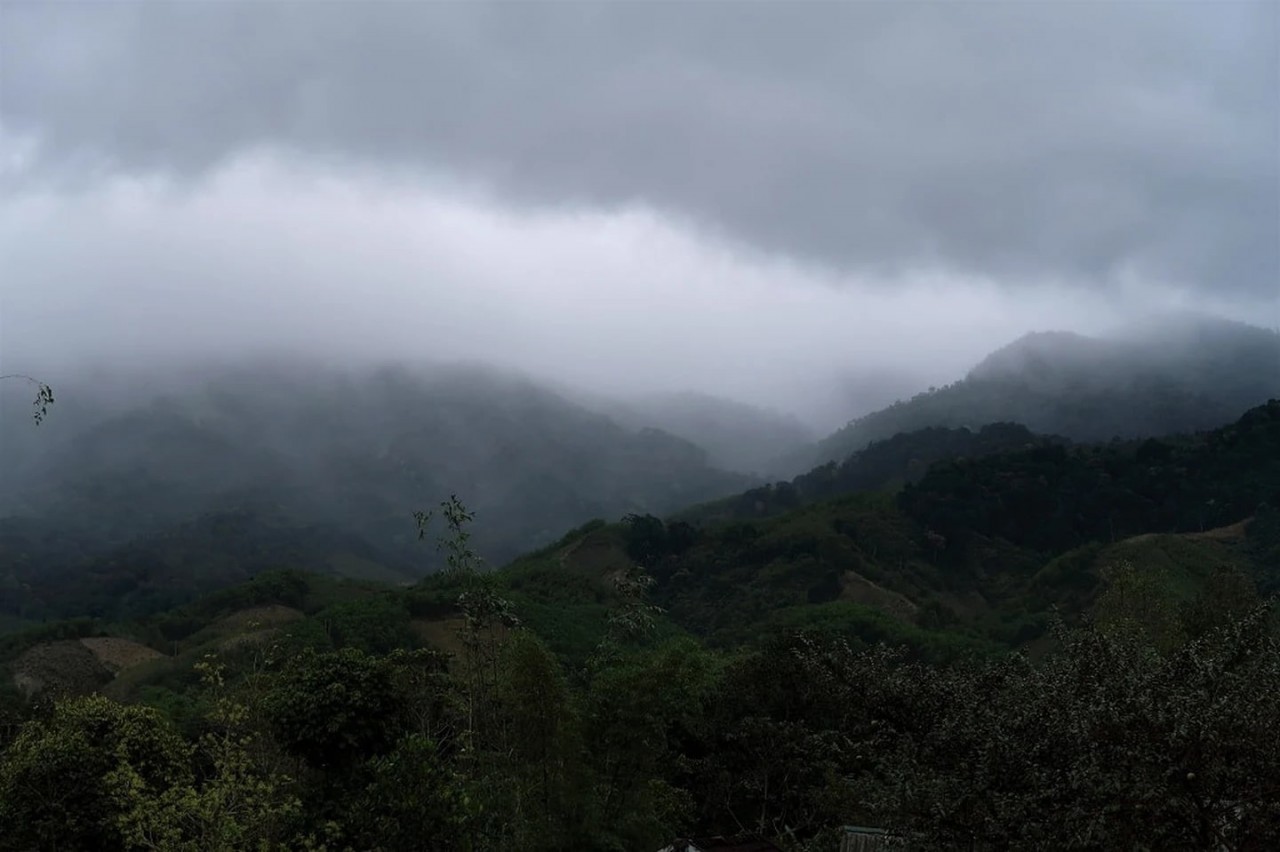 |
| Vietnam in February | © Sam Roth |
Vietnam has an incredibly diverse climate influenced by both tropical monsoons and its range of altitudes and latitudes. Temperatures can vary from a brisk 4°C (39°F) in the northern mountains during winter to a sweltering and humid 36°C (97°F) in Ho Chi Minh City during the middle of the dry season. In general, the weather is marked by two distinct seasons: the northeast monsoon from October to early April, and the southwest monsoon from April to September.
Weather in Sapa
 |
| Photo: Enchanting Travel |
Sapa, in Vietnam’s north, has the most varied climate in the country, experiencing both subtropical summers and temperate winters. Temperatures top 29°C (84°F) in June and July and drop near the freezing mark in late December. We recommend you pack a warm jacket, gloves and beanie during the winter months between November and February, when it can get cold, frosty and occasionally snows. While some might prefer to avoid the rain and travel to the north during the dry season (November to May), the wet season (June to October) is the best time to see the terraced rice fields.
Weather in Hanoi and Halong Bay
Hanoi and Halong Bay experience similar climates, which is influenced by the northeast monsoons. Temperatures range between 16°C (61°F) and 21°C (70°F) during the winter, which runs from November to March. Summer begins mid-April and continues until October, when it is hot, humid and rainy. Hanoi is wettest in July and August when the temperature reaches an average high of 32°C (90°F). Often shrouded in mist, weather can change quickly in Halong Bay, where a breeze from the coast can have a cooling effect.
Weather in Hoi An
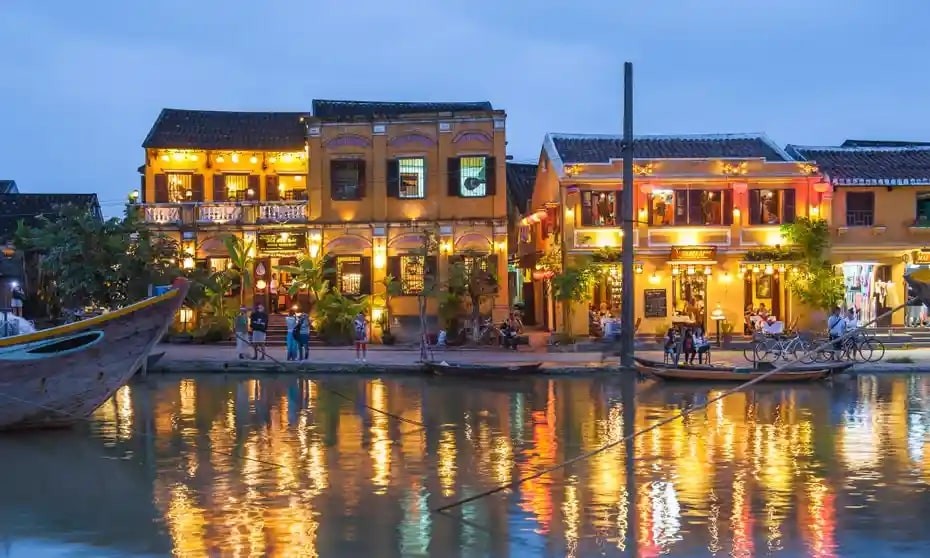 |
| Photo: Alamy |
While the coastal city of Hoi An is warm year-round, it does experience two distinct seasons – dry season from February to August, and wet monsoon season from September to January. The dry season is characterised by plenty of sunshine, low humidity, highs of 30°C (86°F) and calm waters. While most other parts of the country experience heavy rainfall during the summer, Hoi An stays dry until August, making it a great summer beach destination. During the wet season, the city’s low-lying old town is prone to flooding and typhoons become a risk.
Weather in Ho Chi Minh City (Saigon)
Ho Chi Minh City, formerly known as Saigon, is consistently warm and humid, averaging around 28°C (82°F) during the day and barely dropping in temperature overnight. From April to November, the southwest monsoon causes heavy, though usually brief, tropical downpours in the afternoon.
2. Vietnam suggested motorbike route
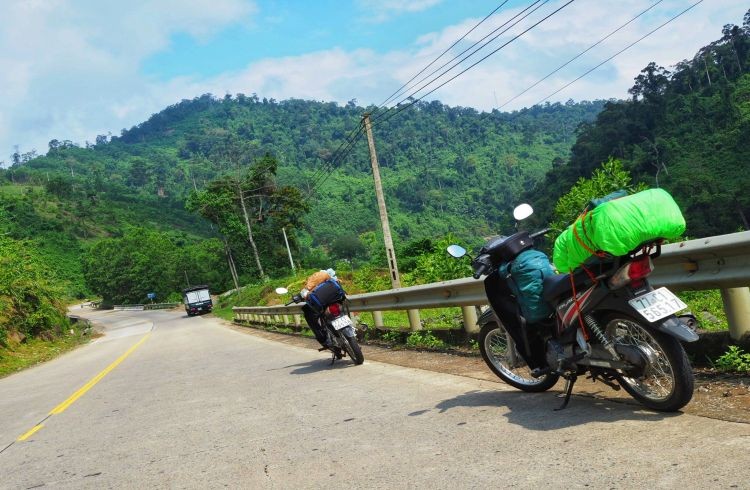 |
| Photo: World Nomads |
Vietnam is a country with limitless route options. There is no right or wrong route and no right or wrong section to drive. Some people come back yearly, just like a Ski holiday, and with each revisit, they tackle a new set of roads. Don’t overthink your route. Whatever you do, it is going to be good!
For many backpackers riding a motorbike from Hanoi to Ho Chi Minh City or vice versa has become somewhat of a rite of passage. The trip can be completed in two weeks (less if you rush) and could be a mix of white sand beaches, limestone ridges, and endless rice fields. There are a number of established routes making the trip easy and enjoyable.
The South – Must do highlights
DT725 – A road that connects Cat Tien National Park and Dalat. A route of open meandering corners that cut through a wide variety of different sceneries.
DT702 – A road that primarily starts after Mui Ne and continues through to Cam Ranh. The best coastal drive in Vietnam. This road goes as close to the sea as possible. It must be one of the best coastal motorbike drives in the entire world.
Ql27C – Connecting Dalat to Nha Trang. Although short, this road is a favorite among travelers for its quick and efficient pass, connecting the two very different Dalat and Nha Trang cities. Dalat being a cold and peaceful mountain city. Nha Trang is the coastal party center of Vietnam.
DT669 – Loosely speaking, it connects An Khe to Hoi An. It is documented in detail on the best way to drive from Nha Trang to Danang. The DT669 is incredibly remote, perfectly paved, fast, and open. If you want to push your motorbike to its top speed, this is the place to do it.
Optional Extra: QL55B – A favorite among expats creating short adventure loops close to Ho Chi Minh City.
Central Vietnam – Must do highlights
The Hai Van Pass – Arguably the most famous road in Vietnam for riding a motorbike. Easily accessible for any traveler. It connects Hoi An to Hue on a roughly 4-hour coastal drive that overlooks the sea and mountains. Famous and approachable to all is its main highlight. However, it is a long shot from being “the best road in Vietnam.” In many cases, it sends the adventure travelers off in the wrong direction, away from the far more impressive Ql14 on the Laos border.
The North – Must do highlights
Ha Giang Loops – Ha Giang is one of the most spectacular places on earth. Deep valleys surrounded by mountain roads provide you and your motorbike some of the best views on the planet. Despite its remote region and variable climate, it has become famous and accessible to most travelers with convenient little loops for any holiday length.
DT204 – Loosely speaking, it connects Cao Bang to Ha Giang. This road is remote and beautiful. It climbs some remarkable cliff edges. It isn’t a road for beginners, but it is all paved and mostly drivable. It will give some drivers a scare at some of its steep descents.
DT 153 – A road that connects Lao Cai to Ha Giang (kind of). Not famous and rarely talked about. However, from my recollection, this is the most beautiful road in Vietnam. Perhaps I had a good day, but I recommend you go and drive it and decide for yourself!
Places not to ride in Vietnam
The Mekong Delta
The Mekong Delta is hot, flat, and busy. There is no real way to escape this. A fully guided tour with years of route planning can navigate the Mekong Madness to provide a feeling of remoteness. However, for the standard traveler, this is not a section to “motorbike.” It is a lovely option for general culture and a relaxed holiday that is not based around covering hundreds of kilometers.
Hanoi to Halong Bay
Hanoi’s drive to Halong Bay is probably the busiest and the worst driving in the entire country. There is a reason why Halong Bay tours only operate from Hanoi by bus!
If you really must drive this horrific section, then head off to Cat Ba Island and run your Ha Long Bay tour from there.
3. The bike
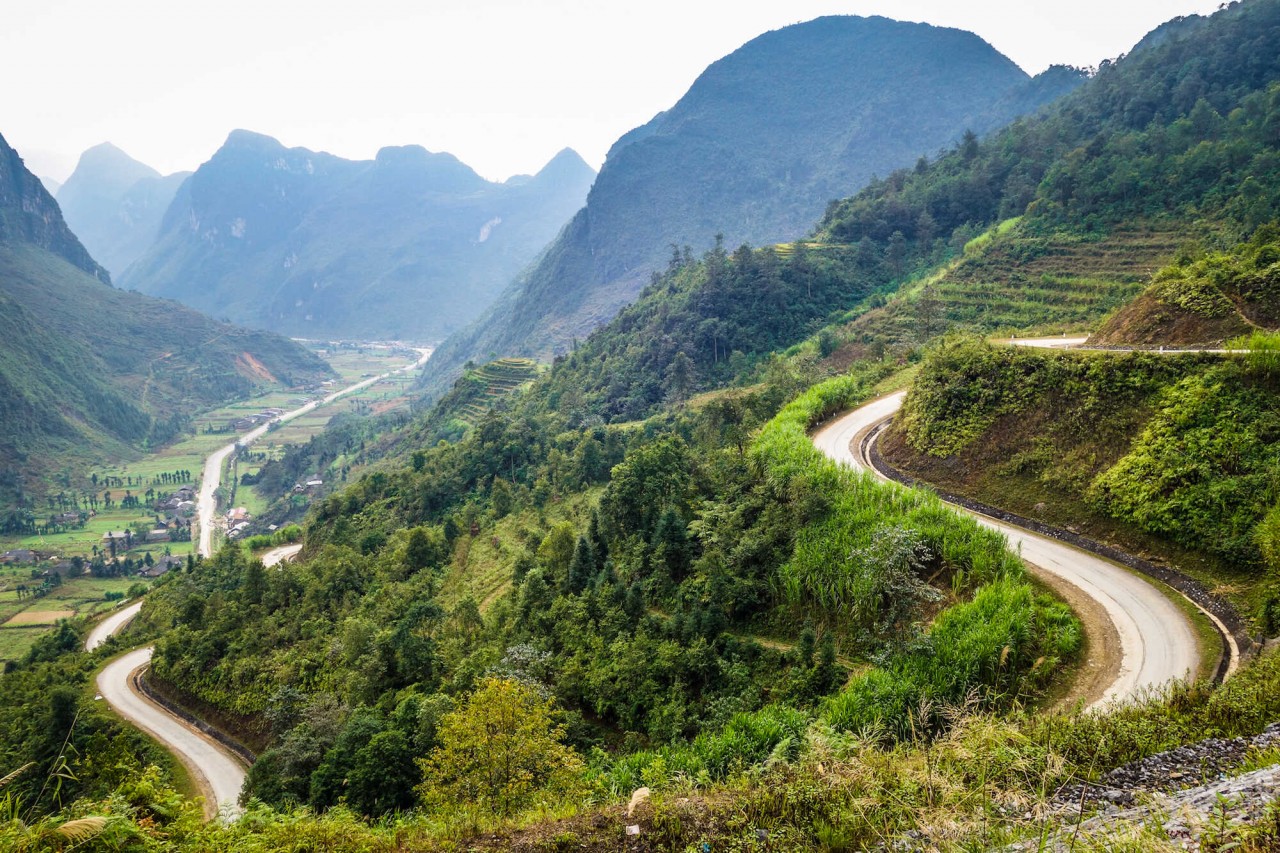 |
| Photo: Alesha Bradford |
The overwhelming majority of travelers riding in Vietnam begin in either Hanoi or Ho Chi Minh City and these are the best two places to find a bike. Some travelers opt to rent a more reliable bike, others opt for the allure of buying their own and then selling it at journey’s end. There’s nothing wrong with either option, just be prepared to stop more often for repairs if you purchase second-hand.
In both cities, bikes to purchase are easily found in the backpacker districts. Rental shops, which also sell used bikes, are easily found as are flyers posted in hostel windows by travelers at the end of their adventures looking to sell their bikes back.
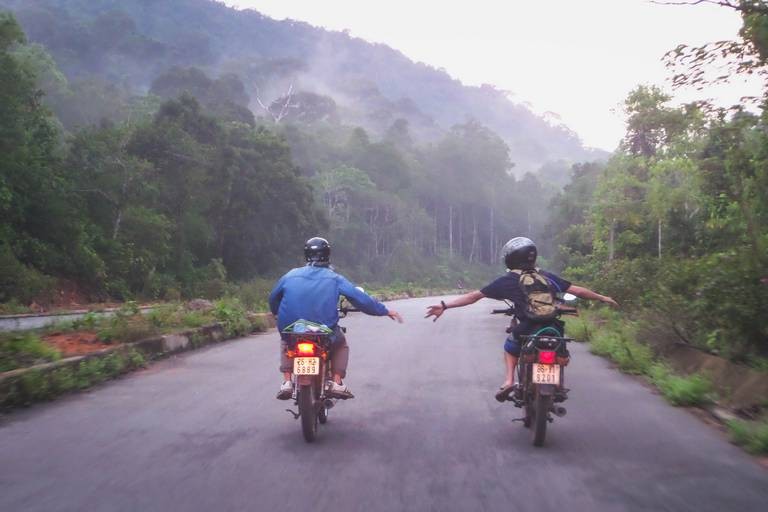 |
| Photo: The Lost Passport |
Those who purchase bikes from shops or fellow travelers often buy manual Honda Win’s or fully automatic Yamaha Nouvos. The Win is the sexier of the two options and what people associate with any Vietnamese motorbike adventure, yet more prone to breakdowns as the parts inside are almost certainly not Japanese, but Chinese knock-offs. A Nouvo is easier to operate, particularly for a beginner, yet not guaranteed to break down any less, as those for sale by backpackers have racked up substantial miles. The cost for either bike shouldn’t be more than $250 USD.
There are a number of reliable companies that rent bikes for weeks or months on end. These are generally semi-automatic bikes such as Honda Waves or Honda Blades and are far less likely to run into any real trouble. A rental for a month should be $200-$300 USD.
4. Getting a driving license in Vietnam
If you do want to drive a vehicle in Vietnam, be it a motorbike or a car, you are obligated by law to get a driver’s license in Vietnam.
Not only is it illegal to drive without a valid driver’s license issued in Vietnam, but it also is safer for you and everyone else.
The requirements you need to apply for a Vietnam driver’s license are as follows:
Required documents:*
- One copy of your passport with the photo page and the visa page (both visa and passport must be valid).
- One copy of your home country’s driver's license, with a translated and notarized version (you would need to take it to a public notary first).
- Three passport-size photos (approximately 4 cm x 3 cm).
- Completed application form (verify that this form is up to date before filling it out).
- 135,000 VND (about $6 USD for the processing fee).
*Check with the local Department of Transportation since the rules are different in each major city or province.
Cost:
The total cost will be up to but rarely more than 500,000 VND (about $22 USD), which includes notarization, translation, photos, and license fees.
5. The pack
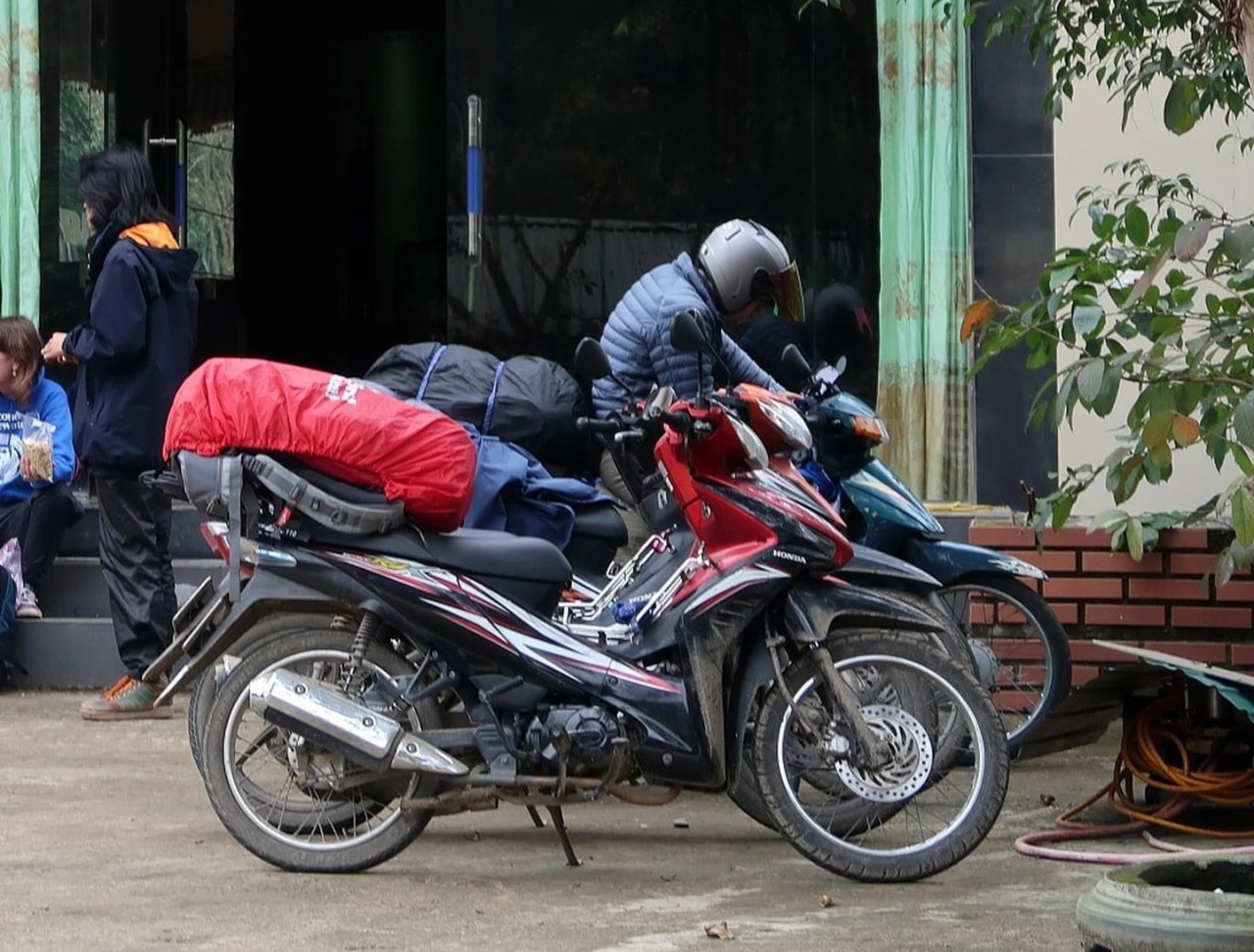 |
| Bikes packed and ready to go | © Sam Roth |
Start with a travelers backpack, 60-75 liters, and go from there. Almost anything you need can be bought in HCMC or Hanoi, so if you’ve packed light and run into a snag it’s easy to straighten yourself out in these hubs. The amount of clothing is obviously dependent on the length of the journey and how often you think you’ll need to change. Remember that no motorbike trip in Vietnam is a clean affair.
A poncho, or better yet, rain pants and a good jacket, is a necessity as heavy rains pop up sporadically across the country. A med-kit is a smart choice, as is a water bottle and a larger spare gas bottle. Some travelers opt to camp, so a tent or hammock and mosquito net would need to be added, plus a blanket depending on the route and time of year.
Another necessity is a good med-kit. Riding is dangerous and it’s quite common to see road-rashed foreigners slinking from one bar to the next in many of the backpacker districts. A reusable water bottle is also a smart bet, as is a larger half gallon sized jug to fill with gas in case of emergency.
 | How to Increase Your Height: Before and After 18 Your height can be determined by a lot of factors and things, including nutrition, health, genetics, etc. Increasing your height after 18 will not be ... |
 | Useful Guide To Get A Job In Another Country Living and looking for a job in a foreign country is a big challenge that an individual will have to encounter when they move out ... |
 | Great Habits For You To Enjoy A Healthy, Happy Summer Summer is when you spend your time enjoying different outdoor activities, going on vacations, and relaxing. These habits will keep you healthy and happy during ... |
Recommended
 Handbook
Handbook
Vietnam Moves Up 8 Places In World Happiness Index
 Handbook
Handbook
Travelling Vietnam Through French Artist's Children Book
 Multimedia
Multimedia
Vietnamese Turmeric Fish among Best Asian Dishes: TasteAtlas
 Handbook
Handbook
From Lost to Found: German Tourist Thanks Vietnamese Police for Returning His Bag
 Handbook
Handbook
Prediction and Resolution for the Disasters of Humanity
 Handbook
Handbook
16 French Films To Be Shown For Free During Tet Holiday In Vietnam
 Handbook
Handbook
Unique Cultural and Religious Activities to Welcome Year of the Snake
 Handbook
Handbook


